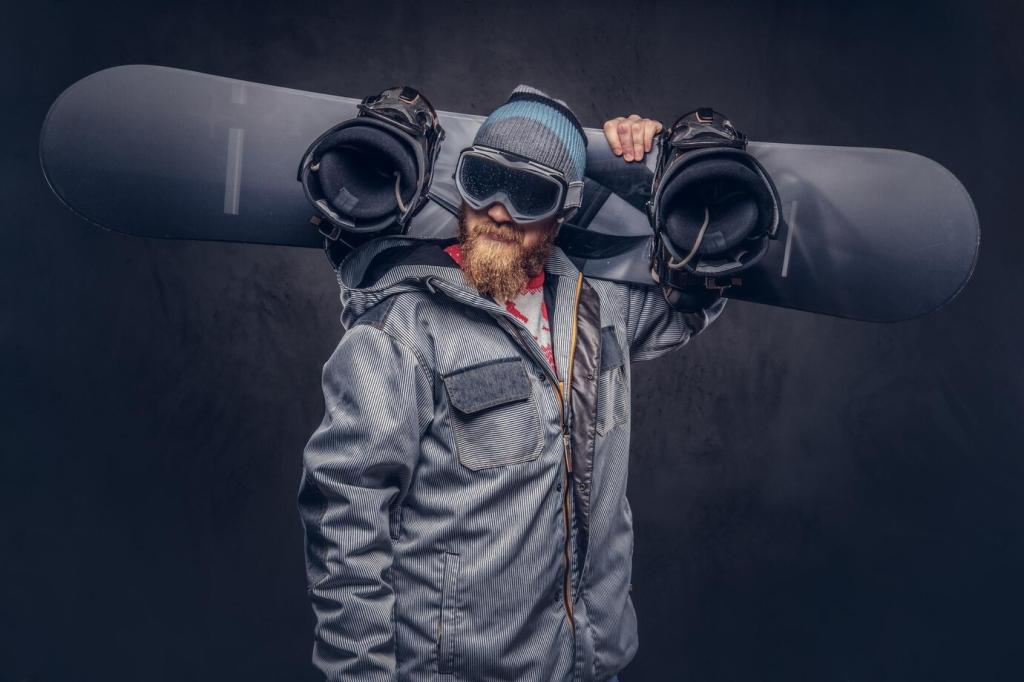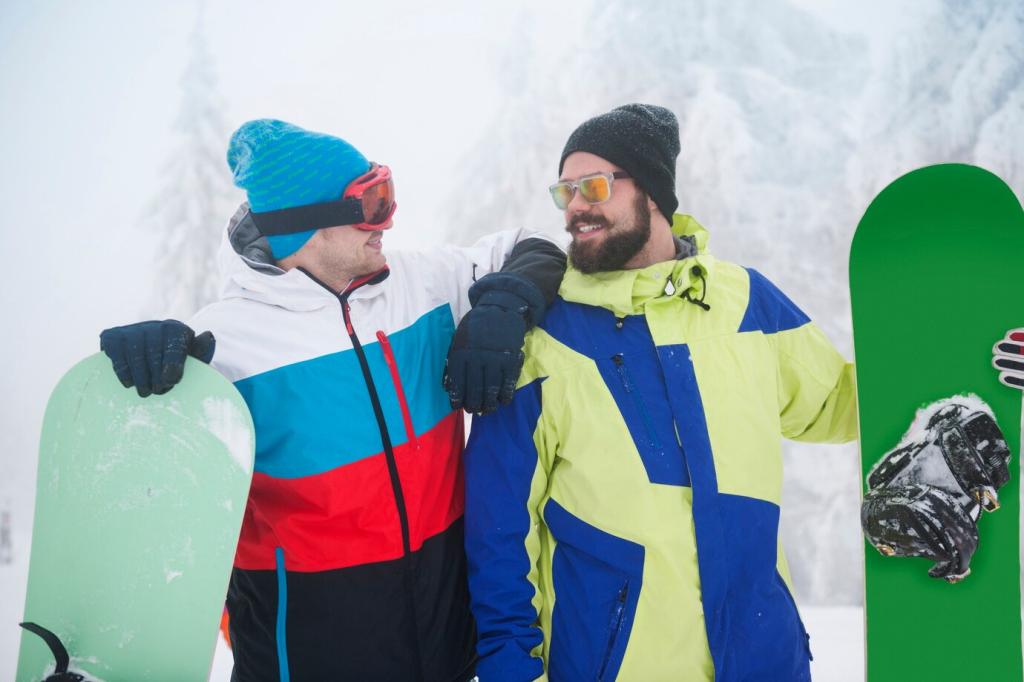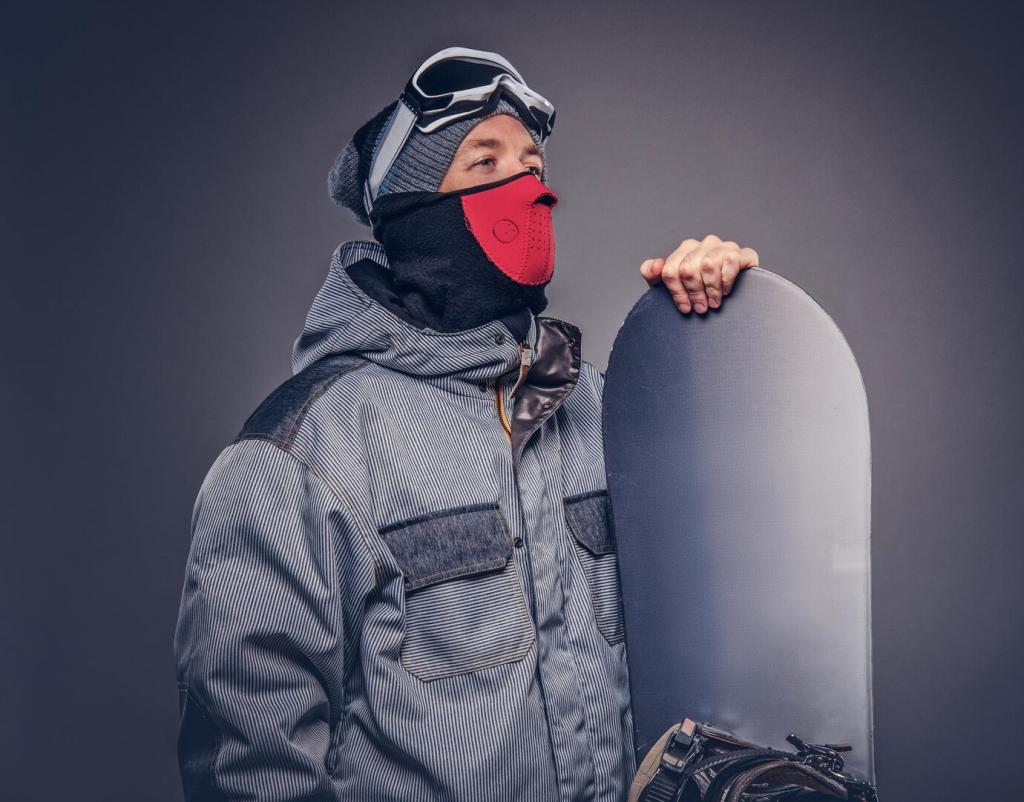Ride Smart: Essential Snowboarding Safety Tips
Chosen theme: Essential Snowboarding Safety Tips. Welcome, riders! This home base is your friendly, no-nonsense guide to safer days on snow, blending practical wisdom with real stories from the hill. Subscribe for new safety insights, share your experiences, and help our community make every run more confident, controlled, and fun.

Know the Mountain Before You Drop
Trail Ratings and Signage
Green, blue, black, and double-black vary by resort, so treat ratings as guidance, not guarantees. Respect slow zones, closures, and rope lines, because patrol sets them for real reasons. Snap a photo of the trail map, mark meeting points, and share your plan with your crew before dropping.
Weather, Light, and Visibility
Flat light can erase contrast and hide ruts, while wind creates drifts and closures. Check the forecast and grooming report, then carry a low-light lens when clouds roll in. I once turned around when chairs shut down for gusts, and that choice saved us from an exhausting, risky traverse.
Snowpack and Surface Conditions
Early sun turns hardpack into slush, then refreezes as bulletproof ice by afternoon shadows. Test edges on the first pitch, noting squeaky ice, sticky snow, or wind slab. Adjust speed, choose safer lines, and keep notes in your phone so your next day’s plan is smarter and safer.
Protective Gear That Actually Protects
Choose a snug, level helmet that meets safety standards and replace it after any significant impact. Impact shorts cushion tailbone slams, while a back protector disperses force during unexpected tomahawks. MIPS helps with rotational forces. A friend’s helmet saved him from a terrifying ice edge collision one stormy March afternoon.


Protective Gear That Actually Protects
Match goggle lenses to conditions, clean them gently, and avoid wiping the inner lens when wet. Dress in breathable layers, skip cotton, and vent early before you overheat. Cold hands ruin focus, so carry glove liners and a heat pack. Good vision and warmth keep decisions sharp and safer.
Warm-Up, Mindset, and Pre-Ride Checks
Activate hips, knees, and ankles with leg swings, hip circles, calf pumps, and mini-squats. Add gentle torso rotations and shoulder rolls to prime balance. On your first run, make slow S-turns and micro-edges to wake up proprioception. This tiny investment dramatically reduces awkward, injury-prone catches on cold muscles.


Warm-Up, Mindset, and Pre-Ride Checks
Set clear rules: no solo tree laps, no new tricks when tired, and last run ends if something feels off. One season, ignoring the last-run rule cost a rider a sprained wrist. Write your rules in your notes app and share one with your riding partner for accountability.
The downhill rider has right-of-way, so always yield when merging or starting. Before you drop, look uphill and across the fall line to spot fast traffic. Avoid blind rollovers and narrow chokes when stopping. A simple glance and shoulder check prevents painful surprises for you and everyone below.
Etiquette and Right-of-Way Keep Everyone Safe
When overtaking, give generous room and pass on the side with the clearest line. A quick on your left while approaching can avert panic swerves. Never cut across someone’s board nose. I once avoided a high-speed tangle by calling early and waiting for a wider opening near the cat track.
Etiquette and Right-of-Way Keep Everyone Safe
Control, Speed, and Safe Falling
Practice garlands, controlled side slips, and falling leaf to refine pressure and edge release. Add pivot slips to keep shoulders relaxed and hips mobile. Choose gentle pitches and repeat until movements feel automatic. Strong fundamentals turn sketchy moments into recoveries instead of crashes, especially late in the day.


Control, Speed, and Safe Falling
Scan landings, roll slowly first, and use speed checks before side hits or park features. Spot your exit and commit only when clear. Post a spotter on busy days. Remember, skipping one feature is smarter than misjudging speed. Safe lines today mean more days riding tomorrow, with fewer close calls.
Essential Avalanche Kit and Carry Method
Wear your beacon under your outer layer, keep fresh batteries, and practice searches monthly. Carry a probe and a metal shovel, not plastic. An airbag pack adds margin but never replaces judgment. Stow gear high and tight to move efficiently. Fast, practiced response saves minutes that truly matter.
Forecasts, Terrain Traps, and Decision Tools
Study daily avalanche forecasts and note problem types, aspects, and elevations. Avoid gullies, creek beds, and convexities on sketchy days. Use frameworks like ALPTRUTh and FACETS to check bias. Last January, our group turned back after seeing shooting cracks, then enjoyed trees on safer aspects instead of rolling dice.
Partner Protocols and Rescue Practice
Travel one at a time, keep eyes on, and communicate clearly at islands of safety. Rehearse beacon checks at the car, then practice probing and strategic shoveling. Most survivable burials are found within minutes, not hours. Your team’s speed is skill, not luck, built through consistent, realistic practice.
Pocket First Aid and Repair Kit
Pack a compact kit with tape, zip ties, a multitool, spare ladder strap, whistle, and small bivy. Add blister pads and a couple of pain relievers. A ten-minute binding fix once saved my day after a buckle snapped far from the lodge, preventing an icy, unsafe one-footed traverse.
Recognizing Concussion, Hypothermia, and Frostbite
Watch for headache, confusion, nausea, or memory gaps after a hit; stop riding immediately. Shivering, slurred speech, or clumsy hands signal hypothermia, while numb, pale skin warns frostbite. Warm gradually, protect skin, and seek medical help. Teach your friends these signs so someone always catches trouble early.
Finding Patrol and Sharing Your Location
Know trail names and numbered markers at your resort. When calling patrol, give the run, nearest marker, and obvious landmarks. Save the patrol number, carry offline maps, and conserve battery with airplane mode. Clear, concise details speed response, keeping you and others safer when minutes genuinely matter.
